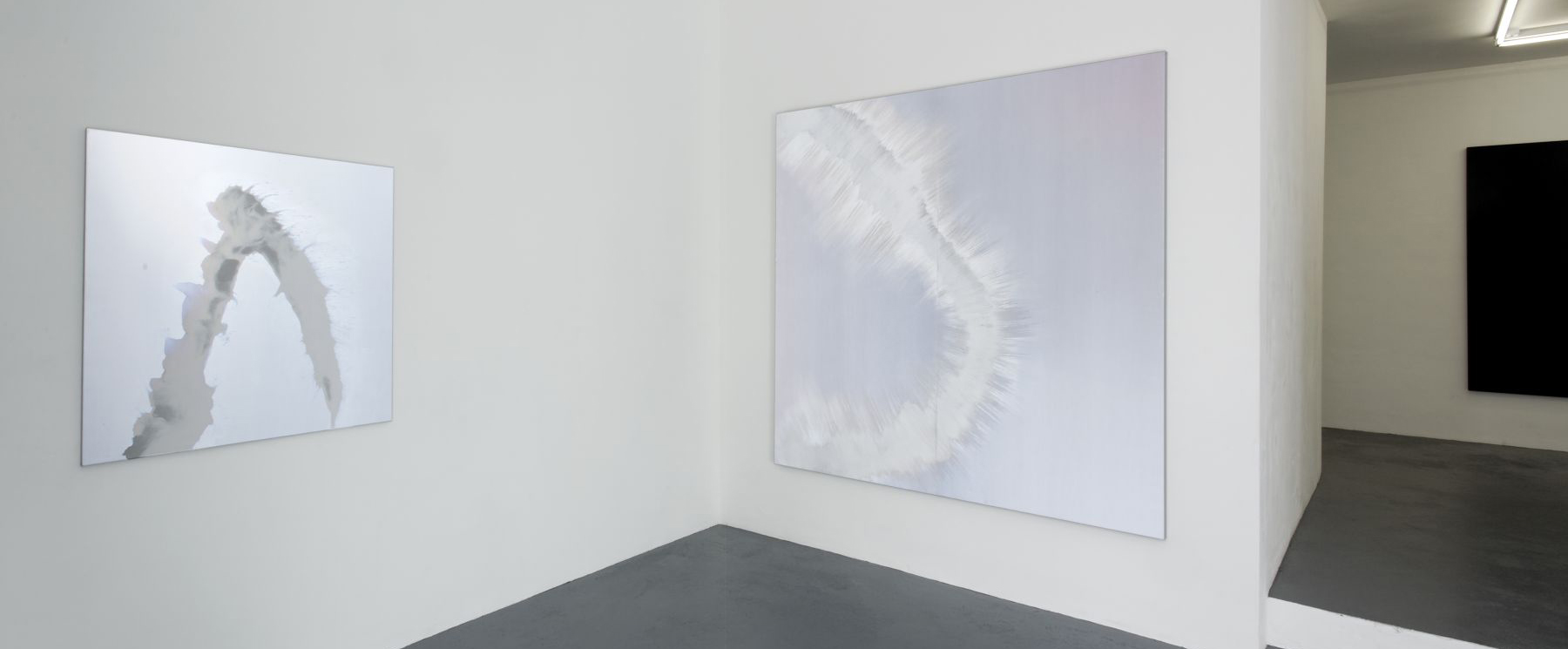Daniel Lergon NIMBI
16.04.2008 - 25.05.2008We are pleased to announce the second solo exhibition of Daniel Lergon (born 1978, living in Berlin) in our gallery. The exhibition is titled nimbi, which the Latin plural of nimbus. The exhibition continues the artists pictorial examination of the interaction between light and surface.
In a part of the exhibition the artist uses the special qualities of a technical texture as painting matter to produce pictorial light appearances, which under appropriate conditions beside others also create the impression of nimbus-like light coronas. The emanations of this matter are of profane nature, they merge with the irrational visual worlds of painting.
In contrast to those there are works on dark textile matter. Painting on different image carriers here is understood as a dialogue between single elements of shape, in both cases supported by the possible light appearances. Thereby imaginative associations are opposed to physical and technical categories.
The exhibition is divided in two rooms with three pictures in each, which differ in size, but always are of quadratic shape. They are ordered in a strict rhythm of a big (250 x 250 cm), a medium (200 x 200 cm) and a small (100 x 100 cm) dimension.
The pictures in the first room are painted on retroreflective material. It has the quality to reflect light always back to where it came from, other than mirroring surfaces. The viewer, who has got a light source in his back, can see his own shadow on the texture. Around his heads shadow a more or less shining light corona, similar to a nimbus, gets visible. This phenomenon also can be found in nature, for example on grassland covered by dew, when the sun is shining on it at the same time. This phenomenon is also called »the heiligenschein« in English language. The texture is painted with clear coat and produces prismatic colour effects at certain areas and fortifies or reduces the process of retroreflection and so also of the nimbus.
Because to the light appearances also belong those of shadow and darkness, there are presented contrasting works on umbra brown textile in the back room. This texture is painted with clear coat, just like the retroreflective pictures. While in the front room, depending on point of view, the viewer either is surrounded by brightness or by greyness, here he thematically is confronted with impressions of gradual, coloured darkness and subtle shadows. Here are also produced reflecting surfaces, but in contrast to the retroreflecting paintings they are mirroring. Here the effect of a heiligenschein is not existent.





